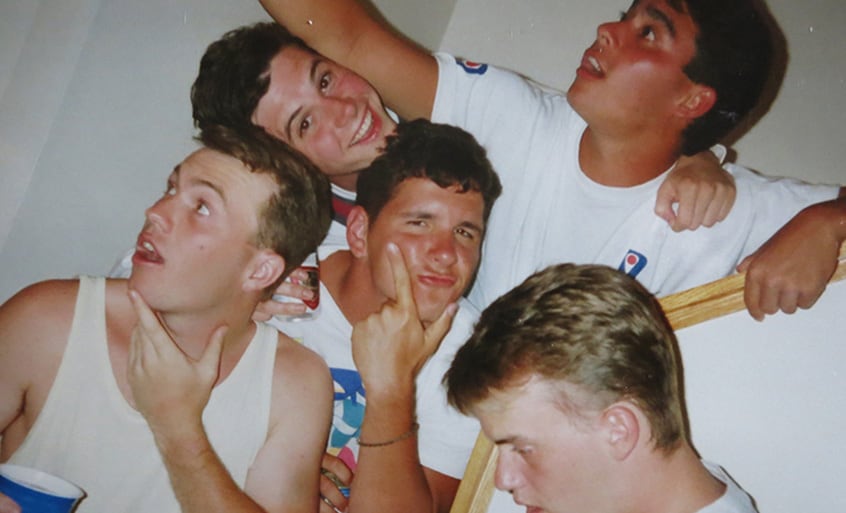In this monthly column, George Miller, TUJ’s Associate Dean for Academic Affairs (ADAA), shares what’s going on at Temple University, Japan Campus (TUJ) and with his life in Tokyo. For this edition, he writes about teaching students in the age of the Internet, when everyone has control of their information intake.
I wasn’t a good student when I was an undergrad.
My university, a small Jesuit school in Maryland, required that we take a wide range of courses across a variety of disciplines, far beyond our majors. I hated those classes, for the most part. Microeconomics? Religion? Philosophy? Yuck.
I knew my career path. All I wanted to do was take journalism classes. I wanted to write stories and take pictures and tell people about all the amazing things I witnessed because journalism thrust me into the world. I experienced so much, thanks to those journalism classes and the freelance work I did as an upperclassman.
Everything else just got in the way.
I blew off the required courses to cover news stories and photograph lacrosse matches.
(Or I played sports or hung out with my friends or slept or did anything else rather than attend that lecture on Beowulf or Hegel or Byzantine art.)

Over the years since I graduated, I’ve thought a lot about my college experience. Did I squander a massive opportunity to learn for learning’s sake by being in those random classes?
Well, yes. I did. And I really regret it.
But I don’t take all the blame.
That microeconomics class I took was in a large auditorium and the professor lectured to hundreds of us for 80 minutes, twice per week. He never asked us questions. He barely even acknowledged our presence. He just paced back and forth and cracked a ruler on desktops. It was dreadful. My Beowulf teacher read to us using the Old English dialect and encouraged us to study the medieval language in the copies of the original manuscript he distributed.
Those teachers failed to make a connection. They were so trapped in their expertise that they did not appreciate the fact that their audience was full of people taking four other classes, working part-time jobs, building relationships, doing internships, playing sports and doing a gazillion other things.
Did the teachers do all they could to make sure that the students learned? I’m not sure.
When I was a student, I most appreciated the people who took the time to get to know me, even if it was just my name. I enjoyed when they asked me questions and when they gave me tasks to complete. I wanted to be a part of my own education beyond doing homework and studying.

When I first started teaching at Temple’s main campus in Philadelphia, I was assigned a large lecture hall journalism class with more than 300 students. It’s hard to make that a personal experience.
So, on the first day of class, I asked a lot of questions.
“How many of you are freshmen?” I asked. Most of the class raised their hands.
I inquired about sophomores, juniors and seniors, with each category getting a cheer from a diminishing number of students.
“Where are you from?” I asked, and then listed various areas – the city itself, the surrounding suburbs, New Jersey, West Coast, elsewhere in the world. The students raised their hands and hooted when their region was called out.
We went through similar questions about majors, career goals, where they lived (on campus or off), their preferred method of learning about news (online, print, TV, radio, etc.) and other characteristics.
After each question, I asked the students to look around, to find the others with their hands in the air. Those are people who share the same backgrounds, current situations and/or life goals. That was a potential base for their college community.
By the end of the exercise, everyone had participated. It was really fun. They were part of the process. And while that wasn’t exactly an educational process, it generated buy-in for me. The students liked the experience and thus, paid attention to my later lectures about communication theory and journalism ethics.

This generation of students – and nearly everyone else these days – is used to controlling their own information intake. We read and watch whatever we want on our computers, tablets and smartphones, whenever we want. If you look at all the people on your train to work or school, you’ll see a hundred people reading, watching or listening to different information outlets.
There will always be somewhat shared experiences – the season finale of Game of Thrones, for example, will be watched by millions of people at once. But ten times as many people will watch later, on their own schedule, when they have time to do so.
As a society, this has massive ramifications – we no longer have common, trusted sources of information shared by the masses. That means the foundation of communal information does not exist.
As an educator, there are also massive ramifications. People want the information they are interested in at times when they are interested and ready. So, quite frankly, lectures don’t work the majority of the time. We can’t just speak at students and expect them to absorb information because that is the prescribed time to learn.

Instead, we need to make learning interesting and experiential. And we need to create opportunities for students to continue learning when they are ready. Some professors have blogs or other places where students can continue discussions after classes. Other professors build exercises that students can do at their leisure.
Almost immediately after I finished my undergraduate degree, I felt remorse for the way I handled my non-journalism courses. I began reading some of the bypassed material in my spare time – history books, texts on science, literature from around the world, etc. It was amazing.
I went back to college a few years later for grad school. And when I finished that degree, I started a liberal arts master’s degree. It’s the least specific degree you can attain – one that only signifies that I have a desire to learn.
I started teaching while working on that second degree and I’ve been in college ever since, learning every day.


